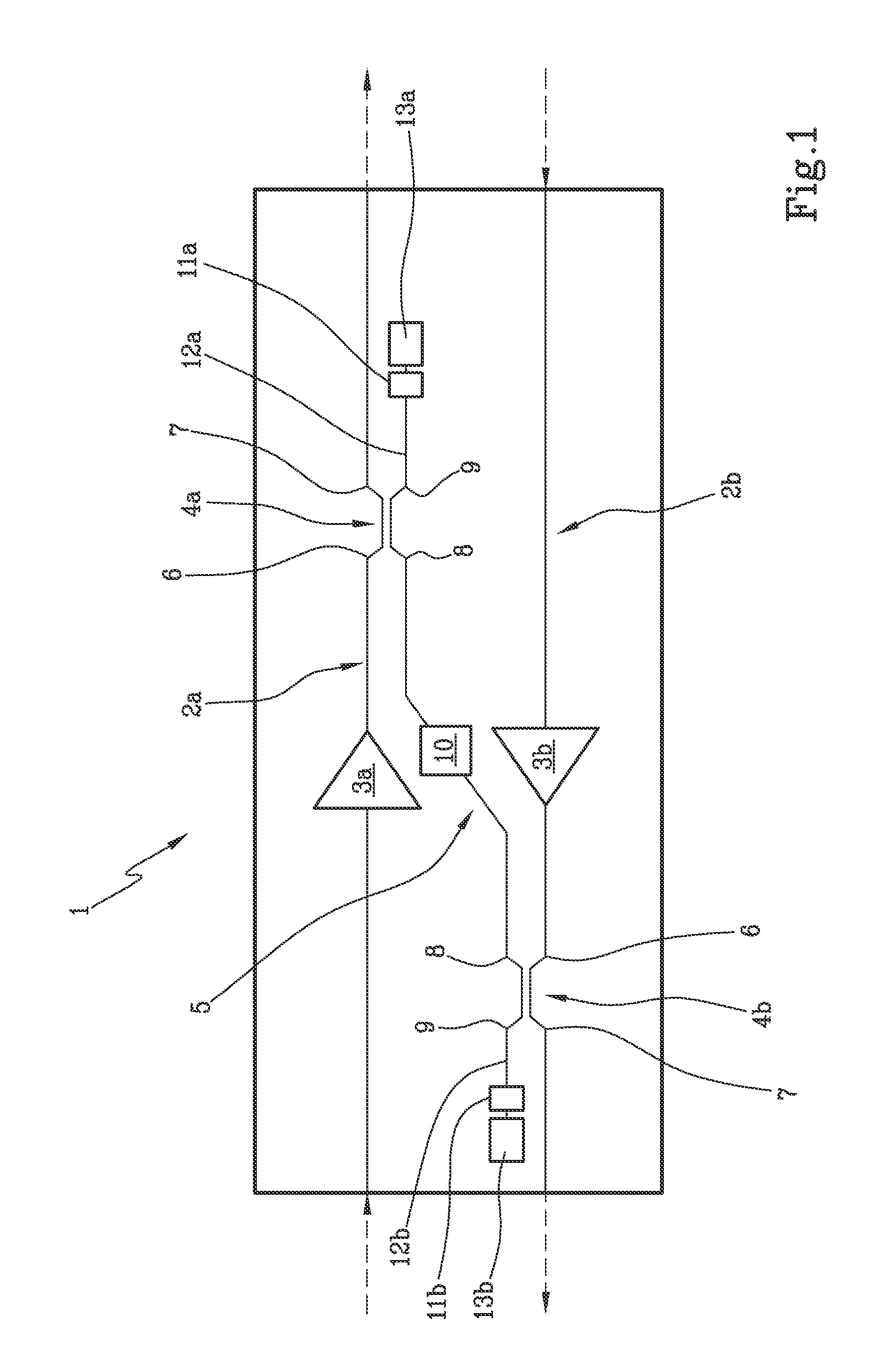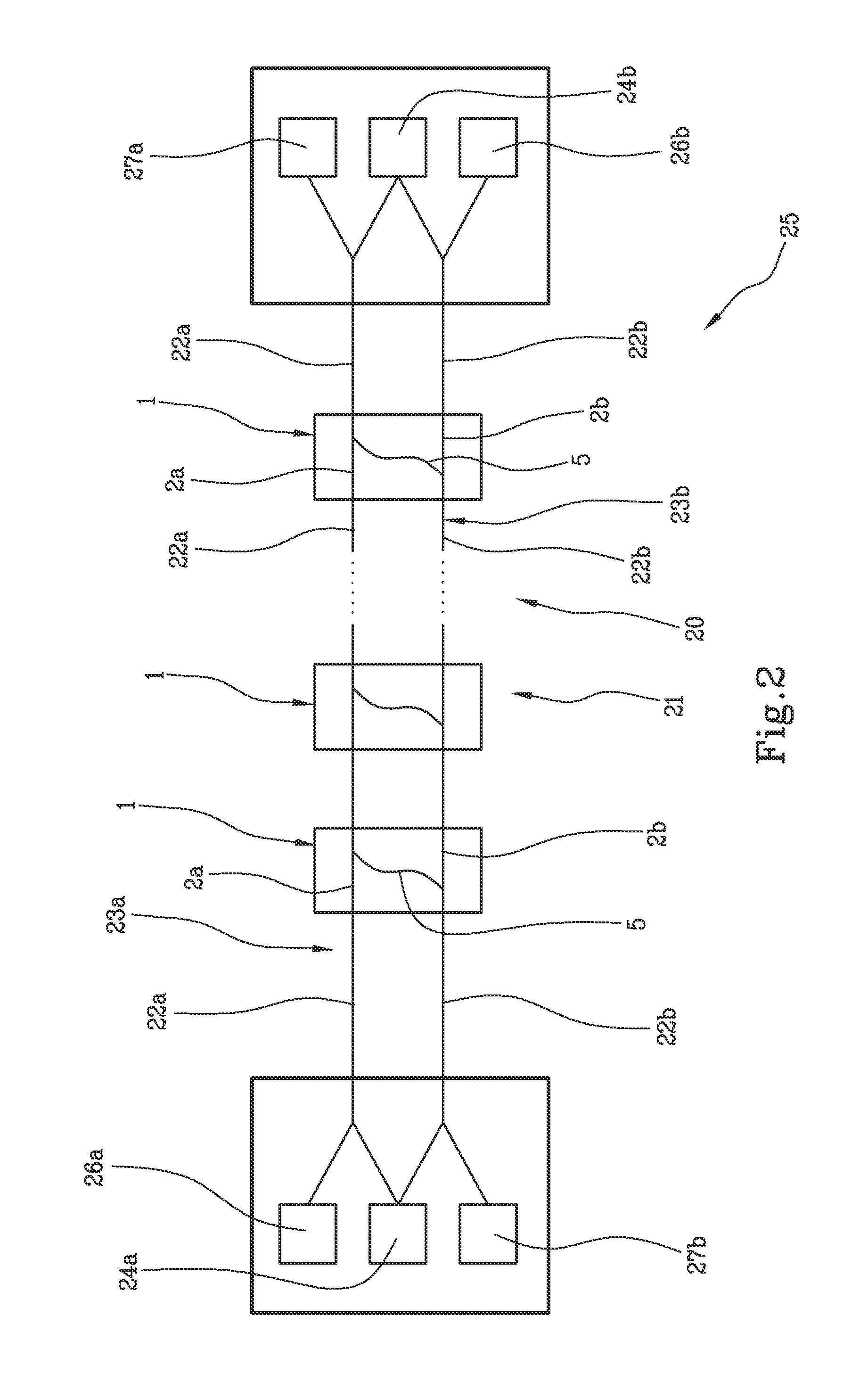Optical amplification stage for OTDR monitoring and related method and system for OTDR monitoring of an optical communication link
a technology of optical communication link and amplification stage, which is applied in the field of optical telecommunication, can solve the problems of insufficient interference of in-band back-scattered wdm signals, disadvantages noted above, and achieve the effect of simple and effectiv
- Summary
- Abstract
- Description
- Claims
- Application Information
AI Technical Summary
Benefits of technology
Problems solved by technology
Method used
Image
Examples
Embodiment Construction
[0043]The optical amplification stage 1 for OTDR monitoring of the present invention comprises a first and a second optical signal path 2a, 2b (e.g. mainly composed of optical fibers) having respectively first and second direction of propagation (indicated by the dashed arrows in FIG. 1) of a respective first and second optical signal, the first and second direction of propagation being mutually opposite, and a first and a second optical amplifier 3a, 3b located along the first and second optical signal path respectively and having an optical amplification band, typically equal for the two amplifiers.
[0044]Typically each of the first and second optical signal is a WDM signal comprising a plurality of optical signal channels having center wavelengths distributed on a grid equally spaced in frequency by a WDM spacing (e.g. equal to 100 GHz or 50 GHz), the WDM signal occupying a WDM band comprised within the amplification band. Exemplarily, the width of the (single spectrally continuou...
PUM
 Login to View More
Login to View More Abstract
Description
Claims
Application Information
 Login to View More
Login to View More - R&D
- Intellectual Property
- Life Sciences
- Materials
- Tech Scout
- Unparalleled Data Quality
- Higher Quality Content
- 60% Fewer Hallucinations
Browse by: Latest US Patents, China's latest patents, Technical Efficacy Thesaurus, Application Domain, Technology Topic, Popular Technical Reports.
© 2025 PatSnap. All rights reserved.Legal|Privacy policy|Modern Slavery Act Transparency Statement|Sitemap|About US| Contact US: help@patsnap.com



